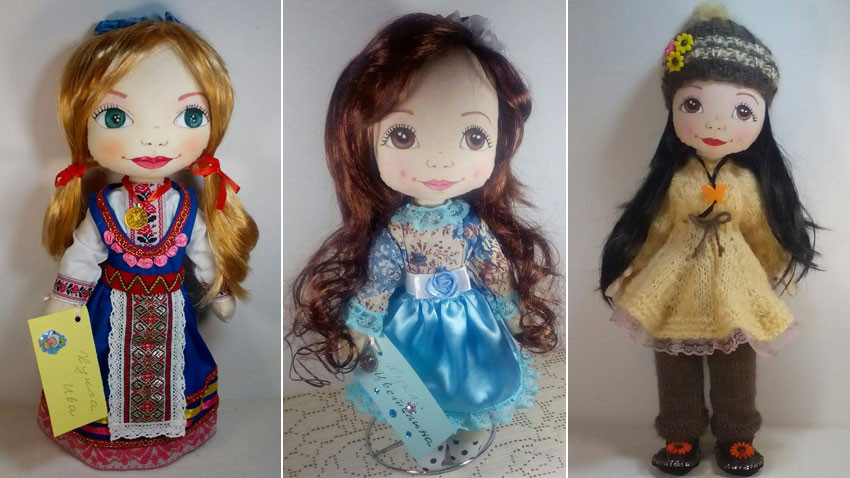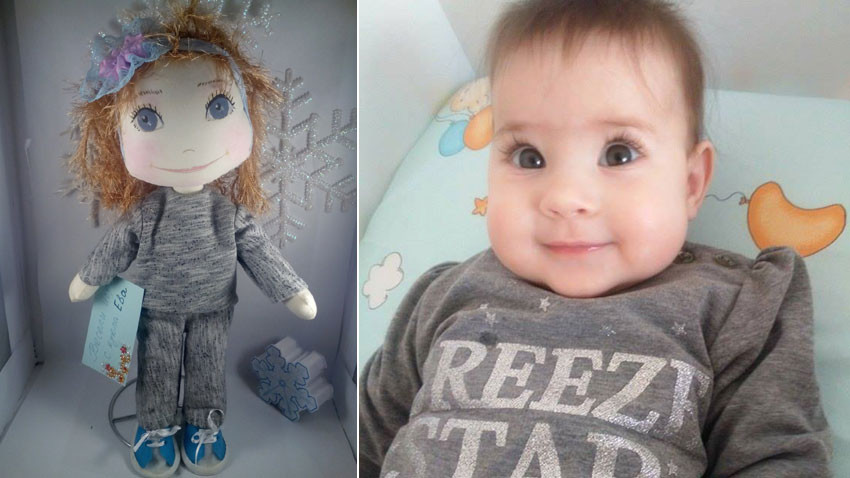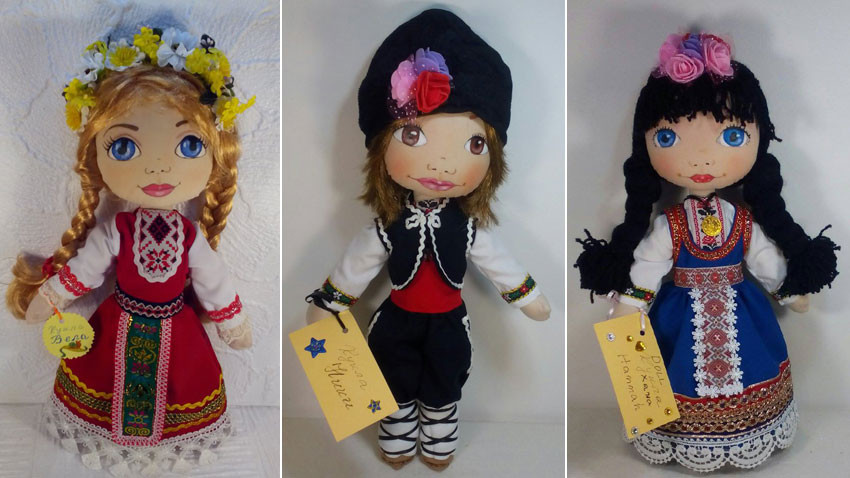
Stanka Kozareva has been making her magnificent dolls for eight years. Sweet faces with eyes wide open, as if to take in the whole world, just like the children they were made for. And like so many good things – the dolls were “born” by sheer accident.
”When I was little I had just one doll,” Stanka Kozareva says. “When I retired I had to find something to do, and then I remembered my doll and decided to make one just like it. That was how it started. It is a passion for me, a love, a way to pass the time. It is a satisfying pursuit, a way to find an inner equilibrium, a way to express myself.”
Before starting to make her rag dolls, Stanka Kozareva used to make souvenir dolls – she dressed the then popular doll Barbie in a folklore costume but quickly realized there was something wrong in doing that. By trial and error, she ultimately came up with her 40-cm tall blue- and dark-eyed figures made of high-quality cotton and silicone fluff and painted with acrylic dyes. And each doll has a name.

“I try to give the dolls Bulgarian names. I even said I would give them my own name, so it won’t die with me. Many of the dolls have foreign names because they are for children born abroad.”
The master doll-maker offers a wide selection of clothing, but most people want their dolls dressed in national costumes.
“They are mostly Bulgarians living abroad, or their parents who go to visit them and want to give them a doll with the wish that they never forget their country. That is basically the reason why people want dolls dressed in traditional clothes,” Stanka Kozareva says. “Some time ago a woman married in a North European country commissioned two dolls for herself and for her husband – a girl and a boy dressed in folk costumes because, as she said, I want to make him see how beautiful Bulgarian folk costumes are.”

Stanka’s superb dolls spread the fame and beauty of Bulgaria far and wide – to Austria, the UK, Holland, USA. And her biggest reward is the appreciation of people and the love of children.
“I am happy to see my clients delighted,” Stanka Kozareva says. “When I see photographs of the children with their dolls, I see the light shining in their eyes, the way they hug the doll, and that is an incentive for me to make more dolls – again and again.”
English: Milena Daynova
Photos: private libraryPresident Rumen Radev's "Support a Dream" charity initiative has attracted the support of musicians, stylists, designers and donors, the head of state's press secretariat said. A prom hosted by the president each spring brings together high school..
The Speaker of the National Assembly Natalia Kiselova will today award the winners of the 32nd Children's Easter Festival in the Serbian town of Bosilegrad. The children will compete in three categories – for the strongest, most beautiful and most..
A colorful Easter celebration under the slogan “Let’s sing and dance on Easter, on the square” will take place today in the open air in the town of Stara Zagora. A number of folklore groups and singers from the region will take care of the good..
Cambridge Day 2025 - one of the leading events for English language teachers in Southeast Europe - takes place today at the Balkan Hotel in Sofia. For..
Students block the entrances to the Radio and Television of Serbia For 12 days now, students and citizens have been blocking the entrances to..
A new book "Bulgarian communities in Albania and Kosovo. Socio-political processes and demographic consequences (1913-2024)" was..

+359 2 9336 661
